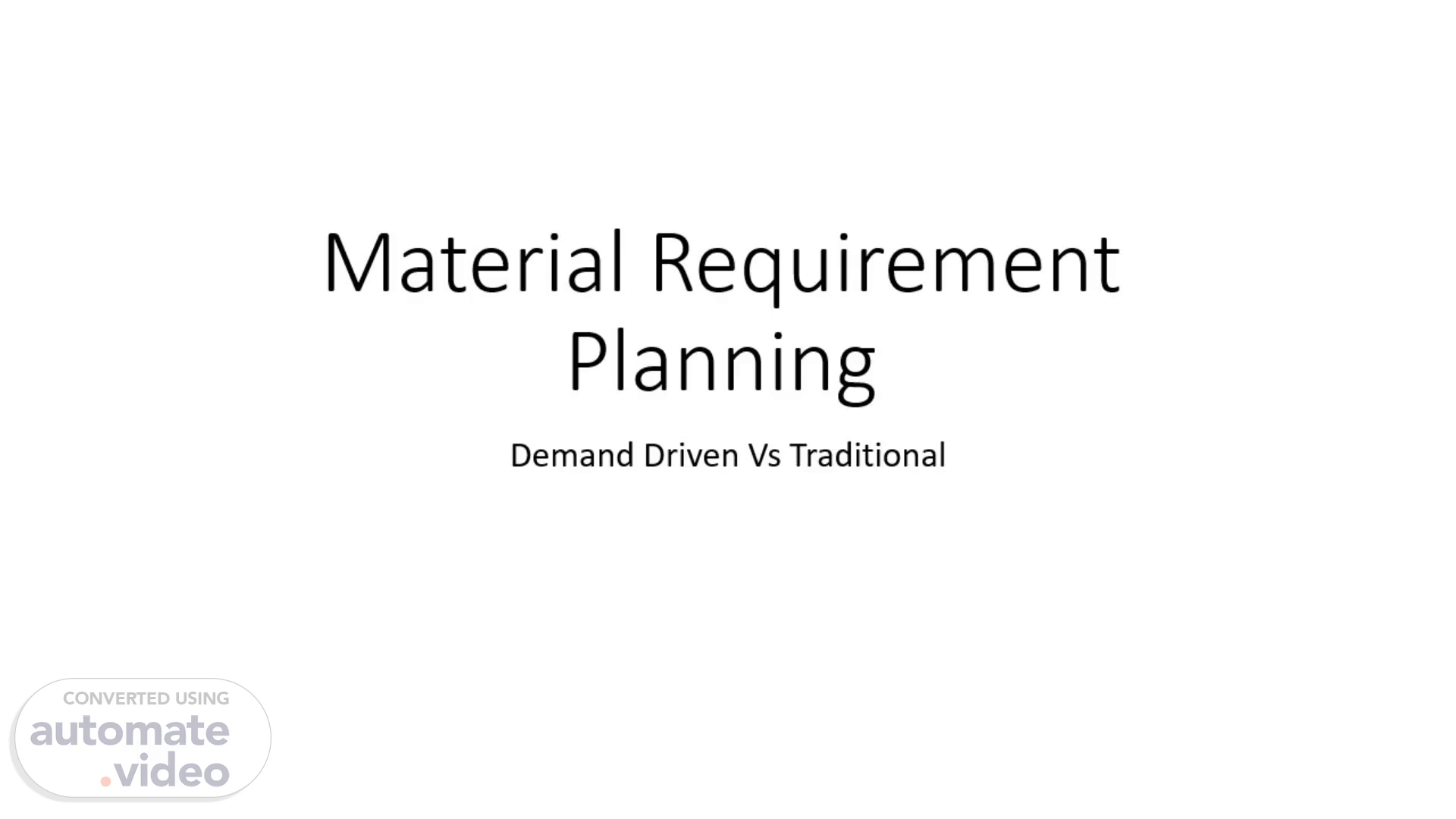
Page 1 (0s)
[Audio] Material Requirement Planning. Material Requirement Planning.
Page 2 (6s)
[Audio] Demand Driven Material Requirements Planning (D-D-M-R-P): Boosting Agility in Turbulent Times.
Page 3 (15s)
Traditional MRP: A Time-Tested, Yet Limited Approach.
Page 4 (25s)
Introducing DDMRP: A Paradigm Shift in Inventory Management.
Page 5 (35s)
The Five Pillars of DDMRP. Demand-Driven: Replenishment is based on actual demand signals, not forecasts. Replenishment: Orders are triggered by buffer levels, ensuring just-in-time availability. Buffers: Strategically placed buffers protect against lead time variability and demand fluctuations. Visibility: Real-time insights into inventory, lead times, and potential disruptions enable proactive decision-making. Collaboration: Continuous communication and information sharing across the supply chain is essential..
Page 6 (57s)
Benefits of Implementing DDMRP.
Page 7 (1m 3s)
[Audio] GearShift Embraces DDMRP. [image]. GearShift Embraces DDMRP.
Page 8 (1m 23s)
[Audio] The Results. The Results. Reduced inventory: GearShift reduces overall inventory by 15%, freeing up working capital and storage space. Improved service levels: Stockouts are significantly reduced, leading to happier customers and increased sales. Lower lead times: By focusing on critical components, GearShift decreases lead times by 10%, improving agility. Increased agility: The company can now adapt to changes in demand quickly and efficiently, minimizing disruptions..